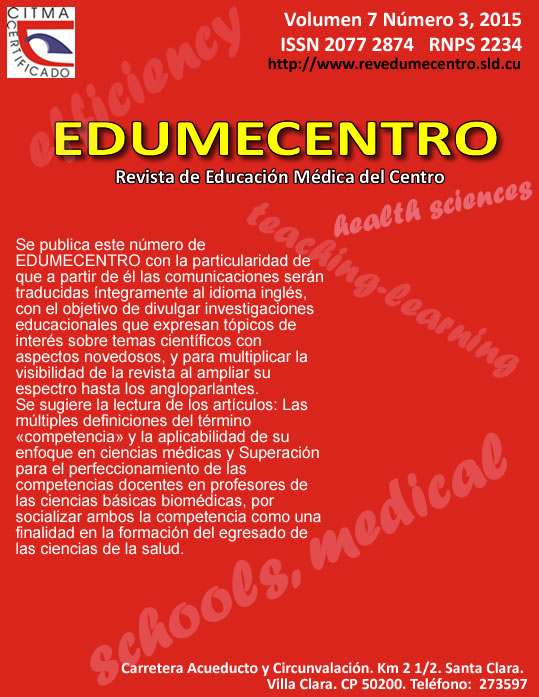Academic efficiency: an indicator from which it´s required to know more
Keywords:
Educational measurement, underachievement, schools, medical.Abstract
The Academic Efficiency (EA) is an assessment indicator whose quantitative dimension reflects qualitative aspects that cover from the quality of the preceding educational systems, the enrolment to higher education policies, up to a wide range of factors that intervene in the teaching-learning process and in the institutional policies to guarantee the students permanence. It is an urgent necessity that the professionals participate with a bigger number of quantitative research works to update and to analyze the main variables that reflect the state of the academic efficiency of the health sciences careers. The authors communicate about the necessity to conceptualize and to apply appropriately the concepts Academic Efficiency (AE), Longitudinal Efficiency (LE) Cross-sectional Efficiency and Average Cross-sectional Efficiency (AC-sE) and they expose some of the limitations frequently made while using them.Downloads
Download data is not yet available.
Published
2015-07-01
How to Cite
1.
Rodríguez Niebla K, Gutiérrez Maydata A, Wong Orfila T, López Castellanos D. Academic efficiency: an indicator from which it´s required to know more. EDUMEC [Internet]. 2015 Jul. 1 [cited 2025 Dec. 17];7(3):188-94. Available from: https://revedumecentro.sld.cu/index.php/edumc/article/view/553
Issue
Section
COMUNICACIÓN
License
Los autores que publican en esta revista están de acuerdo con los siguientes términos:- Los autores/as conservarán sus derechos de autor y ceden a la revista el derecho de primera publicación de su obra, el cuál estará simultáneamente sujeto a una Licencia Creative Commons Reconocimiento-NoComercial-CompartirIgual 4.0 Internacional (CC BY-NC-SA 4.0) que permite a terceros compartir la obra siempre que se indique su autor y su primera publicación esta revista.
- Los autores pueden establecer por separado acuerdos adicionales para la distribución no exclusiva de la versión de la obra publicada en la revista (por ejemplo, situarlo en un repositorio institucional o publicarlo en un libro), con un reconocimiento de su publicación inicial en esta revista.
- Se permite y se anima a los autores a difundir sus trabajos electrónicamente (por ejemplo, en repositorios institucionales o en su propio sitio web) antes y durante el proceso de envío, ya que puede dar lugar a intercambios productivos, así como a una citación más temprana y mayor de los trabajos publicados (Véase The Effect of Open Access) (en inglés).










